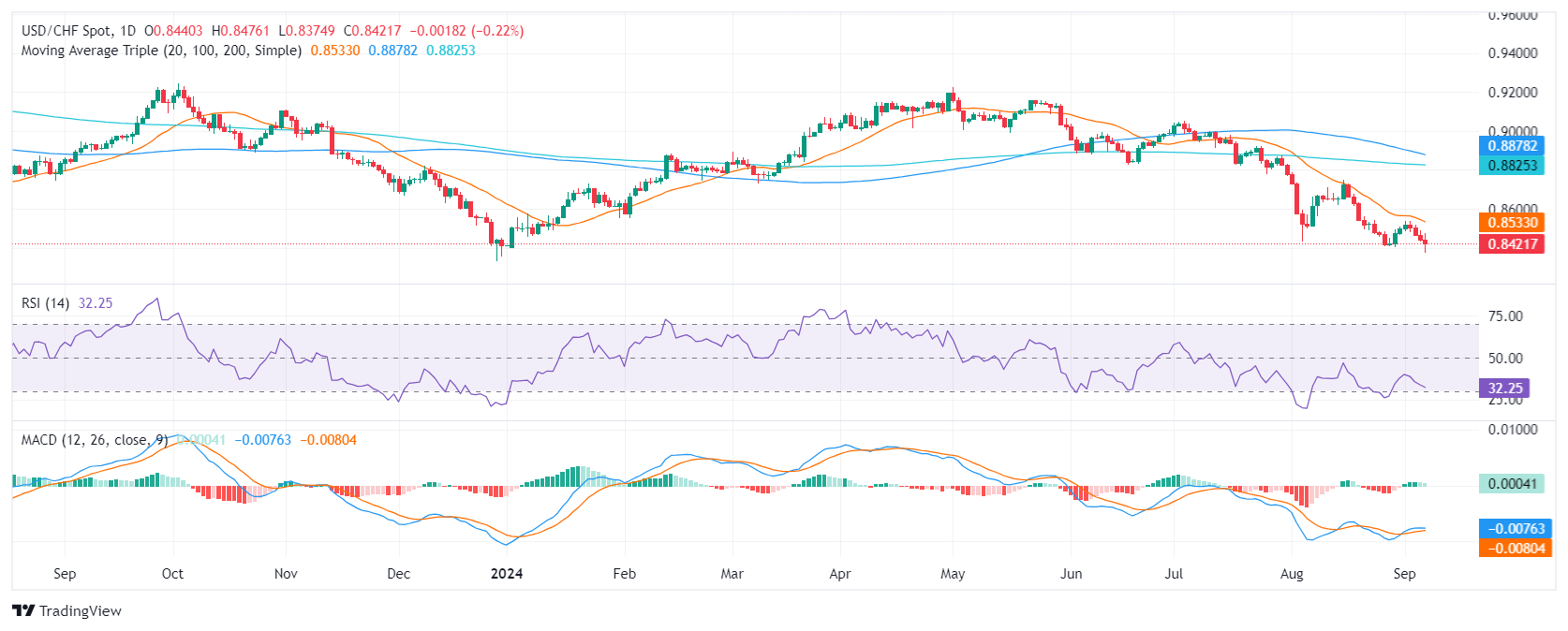The US Dollar’s recent decline against the Swiss Franc can be attributed to a combination of factors, primarily stemming from the soft US labour market data revealed in August. The NFP report, which showed a smaller-than-expected increase in jobs, has dampened expectations for interest rate change by the Federal Reserve.
After initially dipping to 0.8375, the USD/CHF pair rebounded above 0.8400. However, it remains below its daily opening level, reflecting the impact of weaker-than-expected US job growth in August. Investors are now anticipating a more significant interest rate cut from the Federal Reserve in September.
The recent decline in the USD/CHF pair can be attributed to the softening US labour market and the resulting expectations for a more dovish Federal Reserve. While the pair’s technical outlook is currently neutral to bearish, the underlying fundamentals suggest that downside pressure may continue. Investors should closely monitor future economic data, particularly the next NFP report, for clues on the Fed’s likely policy actions.

Softening Labour Market
The August NFP figures, while technically positive, painted a picture of a slowing labour market. The creation of 142,000 new jobs, although surpassing the previous month’s revised figure, fell short of market expectations. The decline in the unemployment rate to 4.2% was in line with forecasts, but the increase in average hourly earnings, while exceeding expectations, may not be enough to offset the broader trend of slowing job growth.
Implications for Monetary Policy
The weaker-than-expected labour market data has led investors to reassess the likelihood of further interest rate hikes by the Federal Reserve. While the market is still pricing in a rate cut in September, the question of the magnitude of that cut remains open. A larger cut is now more likely, especially if subsequent economic data continues to show signs of weakness.
Technical Factors
From a technical perspective, the USD/CHF pair is currently exhibiting a neutral to bearish bias. The Relative Strength Index (RSI) is hovering in negative territory, suggesting that the pair is oversold. However, the flat slope of the RSI indicates that the selling pressure may be easing. The Moving Average Convergence Divergence (MACD) is also showing a neutral signal, with flat green bars. The pair’s downward trend is supported by its position below key moving averages, such as the 20, 100, and 200-day Simple Moving Averages (SMAs). This suggests that the downside bias may persist in the near term.
 Noor Trends News, Technical Analysis, Educational Tools and Recommendations
Noor Trends News, Technical Analysis, Educational Tools and Recommendations





